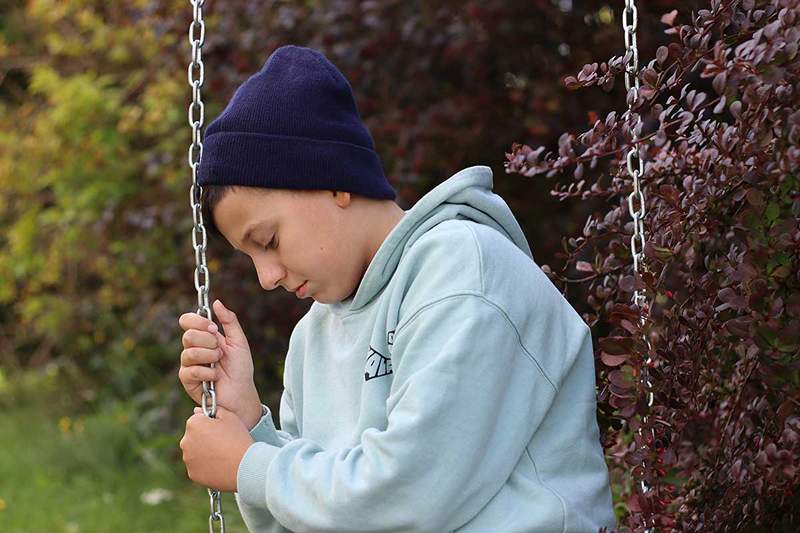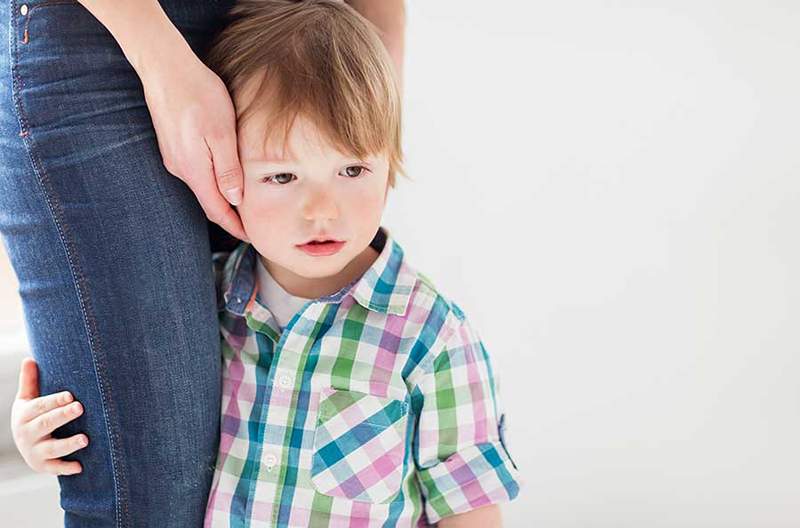How to explain death to children

- 4387
- 272
- Gregory King
Explain death to children may be a bit difficult and may be used to the less appropriate explanations for it.
It should be noted that Children do not understand the concept of death as adults do. However, they can perceive and react to the duel of their parents or relatives relatives.
During the grieving process, parents must accompany their children to resume their lives and heal their wounds.
Content
Toggle- How to explain death to children
- Understanding death in children
- How to act before the little ones
- Bibliography
How to explain death to children
It is important that children understand what they are telling them; You should never hide the truth If your dad, your mother, her little brother or a grandfather has died. In these cases, they should be told that he will be in memories and will be remembered many times because he has been comfortable while he had his company.
To explain death to children, the message must vary according to the child's age. The moment also must be selected, depending on the experiences that the child is facing.
In any case, The child messages should be easy to understand, Without resorting to complex metaphors. Children should be explained in a simple way, preventing them from confusing.
For example, many believing families explain that who has died "is in heaven with God", but this could be very abstract for their ability to understand. Besides, Some stories could make the child believe that their loved one will return, Due to the idea that "his grandfather is in heaven" or "is a star".
Another mistake that is usually made is to avoid talking on the subject, And this does much more bad than good, since the child can think for example that, if his mother and dad do not speak of it it is because "it is something bad", or believe that he cannot or should not speak it because "dad or mom will be sad ". Nor can they work openly their duel, all their pain will be saved to themselves and lock themselves in themselves.
Although death is part of the cycle of life, it is avoided talking about it, but The child cannot be isolated from adult emotions, For the little ones see the cry of their parents, the silences, the isolation of their friends, among others, and they know that something has happened, so they have to learn to manage their emotions.
Understanding death in children
Depending on their level of development, children have a different idea about the irrevocability that death represents and this will determine the approach that will occur to address the issue.
There are four main aspects of death that maybe not all children can understand:
- Irreversibility: Death is permanent;
- Irrevocability: All functioning stops with death;
- Inevitability: Death is universal;
- Causality: The causes of death
When the child does not have enough understanding in this regard, this affects his ability to manage what has happened and face his emotions and feelings.
According to the author Cristián Zañartu, in his study on death and children, the understanding of death is changing with age. Before two years, it exists is the feeling of presence and absence; There is no operational thought so the child does not have the ability to integrate the concept of death.
Following Piaget, in this age, children are characterized by a sensory-motor development, based only on reflexes and behaviors that they acquire with experience, so in the face of pain they can become apathetic and present somatic alterations.
At the age of three and seven years, Pre-operational thinking, focused on intuition, so that the child looks for mechanisms of cause and effect for the events that occur. At this time, the idea of death has a place, but as a temporary or reversible phenomenon, with magical powers, typical of pre-operational thinking, that is, the concept can acquire dark properties.
Zañartu adds that Between the age of seven and twelve Operational thinking appears, a moment in which the elements that Piaget catalogs are acquired as conformators of appropriate death, this is immobility, irrevocability, universality and others. The child is already able to see the situation from different perspectives, although it is unable to generate abstract thinking to understand the permanent and absolute that characterizes death.

The abstraction capacity associated with the concept of death appears at twelve years of age, A time when children get closer to adult thinking and can generate their own ideas, approaching hypothetical-deductive thinking and ask questions such as: “If he died, we will all die?, If I get sick, can I die?, and other doubts.
 Düss fable test: 10 fables
Düss fable test: 10 fables How to act before the little ones
When it comes to Babies and little children that they do not understand death, but perceive the feelings of caregivers, it is important that the adult recognizes their need to be sad. Routines should be maintained as intact as possible, since this will protect the little. Likewise, physical separation must be avoided and attention to the child to comfort him and make him feel safe.
In the case of preschool children, who see death as something temporary, it is necessary that the language used to explain them is simple. Avoid saying things like "traveled to the hereafter", "He went to sleep" or "He died", since the child cannot understand and can even generate fear of sleeping or traveling. Children must hear that the loved one has died and this means that you can't see more.
Regarding the school -age children, They understand death as a final event, but not as universal, simple explanations should be given, asking what they understand and clarifying their possible misunderstandings. They may require support to find the words with which they can express their emotions.
Another aspect to consider is that school -age children They can feel guilty for what happened and the adult must make sure to let him know that nothing he said, he did, he did not say or did not cause death, And that nothing you do can make the late revive.
It is also possible for children to be afraid of being alone, especially when the adult who has died was important for them.
Children should be reminded that not all people who get sick, die; They must be reassured in terms of health and remind him how many people take care of him; They should be given help to do their things and thereby reduce anxiety. It is likely that the child does not want to talk about the death of the loved one because they find them very painful.
In the case of teenagers, They already understand death as adults do, but they could refuse to express their emotions. They may try to find a meaning for death and question about the purpose of life.
You should be patient and encourage the teenager to express your pain. In certain cases, physical activities can help you reduce tension, as well as listen to relaxing music, write a newspaper, draw among others.
Finally, Children should not be left out of farewell ceremonies. If the child has the age to understand what he will listen to or see during the religious trades, it is recommended that they participate and do not move away from the farewell rituals.
At the age of ten, the child can visit a patient or go to a farewell ceremony, take flowers to the cemetery, among others, provided that the family explains why that is done.
It is not necessary for children to have to attend the funeral home, or tell them details about the death, or see the body, since this can cost them to assimilate it, but it can participate in the farewell ceremonies that are a form of tribute to life so that it has the best memories of your loved one.
The 5 stages of duel
Bibliography
- Aberastury, a. (2006). The perception of death in children. In The child, his parents and the psychoanalyst(pp. 733-744).
- Kübler-Ross, e., & Alcover, to. (1992). Children and death. Barcelona: fireflies.
- Tau, r., & Lenzi, to. M. (2012). About the development of the notion of death in children.
- Zañartu, c., & Krämer, C. (2008). Death and children. Chilean Pediatrics Magazine, 79(4), 393-397.
- « The Florida effect, how to influence others by changing our language
- Spire welfare model of such. Ben-Shahar »

